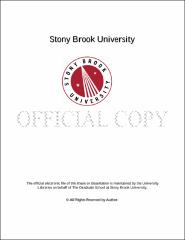| dc.identifier.uri | http://hdl.handle.net/11401/76679 | |
| dc.description.sponsorship | This work is sponsored by the Stony Brook University Graduate School in compliance with the requirements for completion of degree. | en_US |
| dc.format | Monograph | |
| dc.format.medium | Electronic Resource | en_US |
| dc.language.iso | en_US | |
| dc.publisher | The Graduate School, Stony Brook University: Stony Brook, NY. | |
| dc.type | Dissertation | |
| dcterms.abstract | The Ising model at magnetic field H=0 is one of the most important exactly solved models in statistical mechanics, solved on the square lattice in 1944 by Onsager, and later by others on the triangular lattice; its magnetic susceptibility at H=0 continues to be an unsolved aspect of the model, however. The susceptibility can either be viewed as a sum over all correlation functions of the integrable model at H=0, or else as a second derivative of the free energy of the non-integrable Ising model in a field. Therefore, its analytic properties, though derived from the non-integrable model, can be studied through series expansion of the integrable correlation functions. We begin this process by analyzing the first four terms in the form factor expansion of the diagonal correlation functions, and after summing over the diagonal form factor expansion, the first four terms of the diagonal susceptibility expansion. We have been able to reduce the form factor and susceptibility expansion terms, given as multi-dimensional integrals, to closed-form functions in all cases. Under the limit of H going to infinity with the interaction energy E going to minus infinity, the isotropic Ising model becomes a hard particle lattice gas model, with exclusion of nearest neighbor lattice sites. In this limit, the triangular lattice Ising model becomes the exactly solved hard hexagon model, while the square lattice becomes the non-integrable hard squares model. We study in detail these models for finite lattice sizes in order to understand the differences between integrable and non-integrable models. We consider the partition functions zeros and their density for different boundary conditions, and find notable differences in the density which is attributed to an extra factorization in the transfer matrices of hard hexagons which is absent in hard squares. We also study the special point at fugacity z=-1 of hard squares where all eigenvalues of the transfer matrix are equimodular and where the grand partition function's value depends on boundary conditions. | |
| dcterms.available | 2017-09-20T16:50:57Z | |
| dcterms.contributor | McCoy, Barry | en_US |
| dcterms.contributor | Shrock, Robert | en_US |
| dcterms.contributor | Stephens, Peter | en_US |
| dcterms.contributor | Takhtajan, Leon. | en_US |
| dcterms.creator | Assis, Michael | |
| dcterms.dateAccepted | 2017-09-20T16:50:57Z | |
| dcterms.dateSubmitted | 2017-09-20T16:50:57Z | |
| dcterms.description | Department of Physics. | en_US |
| dcterms.extent | 300 pg. | en_US |
| dcterms.format | Monograph | |
| dcterms.format | Application/PDF | en_US |
| dcterms.identifier | http://hdl.handle.net/11401/76679 | |
| dcterms.issued | 2014-12-01 | |
| dcterms.language | en_US | |
| dcterms.provenance | Made available in DSpace on 2017-09-20T16:50:57Z (GMT). No. of bitstreams: 1
Assis_grad.sunysb_0771E_12157.pdf: 3328877 bytes, checksum: 948b120ad3ac167b0055dc88046b7a94 (MD5)
Previous issue date: 1 | en |
| dcterms.publisher | The Graduate School, Stony Brook University: Stony Brook, NY. | |
| dcterms.subject | exactly solvable models, integrable models, Ising model, statistical mechanics | |
| dcterms.subject | Physics | |
| dcterms.title | Integrability and non-integrability in the Ising model | |
| dcterms.type | Dissertation | |

